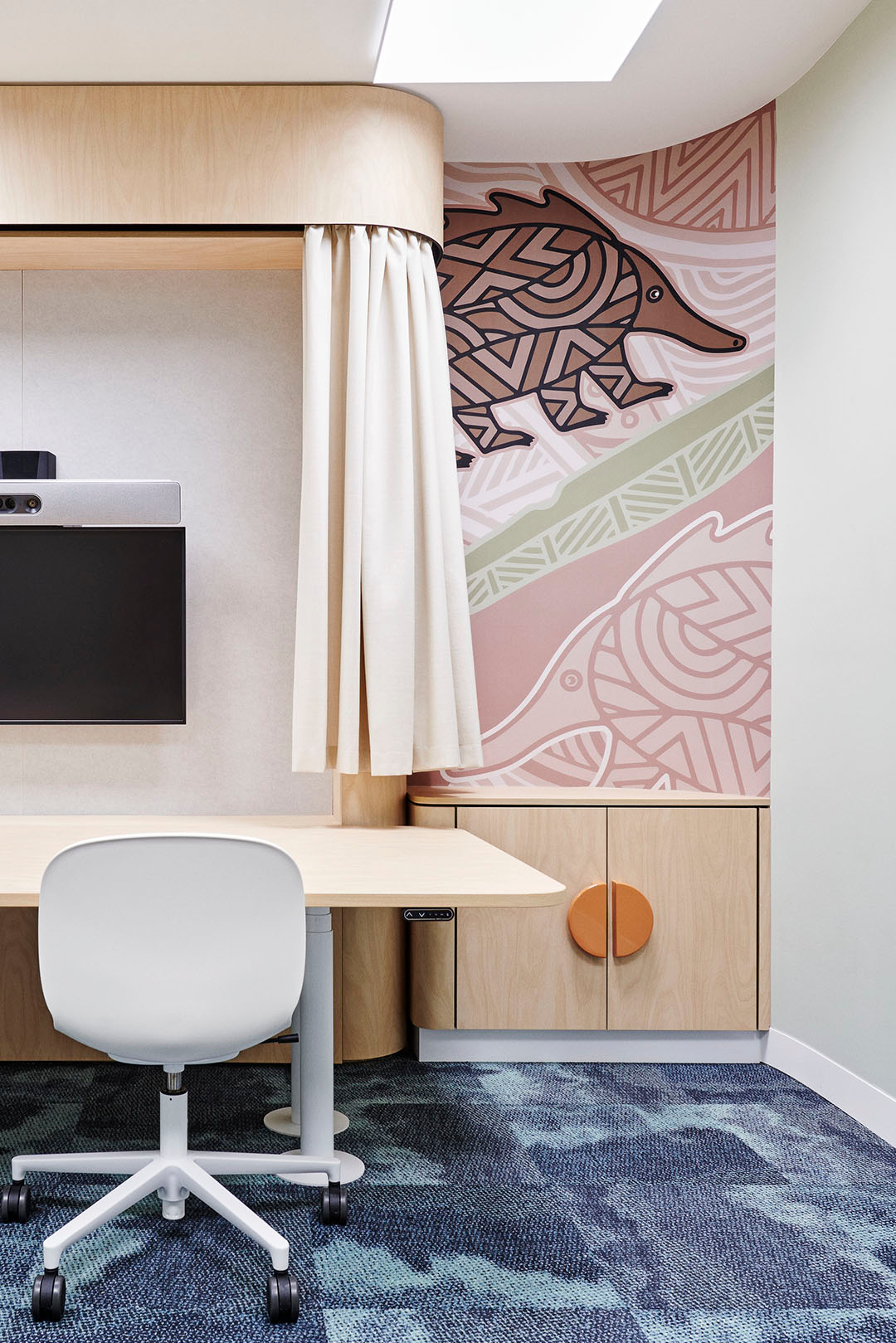Garragarrak Witness and Victim Support Centre
- Client:
- Department of Justice & Community Safety
- Location:
- Melbourne, Victoria
- Features:
- + Designed with principals of positive distraction and reduced stress
- Credits:
The newly refitted Garragarrak Witness and Victim Support Centre transforms how Melbourne’s courtrooms operate by empowering witnesses – predominantly children – to provide their best evidence within spaces that feel safe, nurturing, culturally inclusive and comfortable. The overall design supports the idea that reducing stress can lead to better outcomes for those involved in judicial matters.
The fully refitted facility doubles the provision of witness rooms for children in Victoria. Located on one floor, the layout is divided into communal and private zones that are logically oriented, including a large breakout area with rocking and swinging chairs, books, multimedia and games for positive distractions; private family rooms for moments of respite; and a work zone separate to the facility for support team and full-time staff. A ‘Changing Places’ facility was also introduced to accommodate people with high support needs.
The atmosphere and aesthetics are tightly managed for the comfort of all users. The underlying approach was to reduce stress through the considered application of rounded joinery, gentle acoustics, ample natural light, intuitive wayfinding and a muted colour palette. In the witness rooms the rear walls are treated in a soft green, which is an ideal colour to compliment all skin types in video meetings. The tables can be electronically adjusted to accommodate up to three people and a court support dog below the feet of a child witness if needed.
A significant contribution to the interior is Indigenous artwork by Dixon Patten (Bayila Creative) and Mandy Nicholson (Tharangalk Art). Each room has a unique identity with a culturally safe theme inspired by the Wurundjeri ‘Layers of Country’, and features a mural of a friendly native animal in the line of sight of the witness. These simple illustrations are comforting for children yet not overwhelming, nor are they visible to the courtroom while the witness is providing evidence.

With its standard mineral fibre ceiling and slab-to-slab construction, the pre-existing space was limited. We quickly realised that for optimum acoustic control within budget we needed to expose the ceiling and services. The walls and ceilings prevent sound transfer while minimising reverberation, ensuring that each meeting room has the best audiovisual qualities while remaining airtight and soft, allowing rooms to be used concurrently.
The bulk of expenses related to acoustics, AV and air conditioning, however we repurposed existing furniture (lounges, beds, storage units and equipment) to add sensory comfort and help reduce the impact on the budget. By supporting local designers and communities, we benefit the environment and micro-economies.
The new facility highlights how sensory design excellence could be applied throughout the Australian legal system, creating better social outcomes for those providing their evidence and the judiciary process as a whole.











